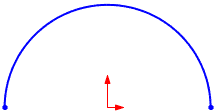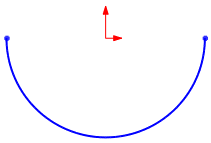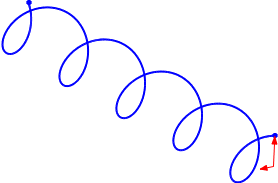When you create equation driven curves, the values you use must be in radians.
You cannot use global variables directly for equation driven curves. However, you can create a global variable and associate it with a dimension, then use the dimension in the equation for the curve.
Additional information:
- To control the curve rotation, you can drag the curve, add relations, and so on. The curve acts as any other rigid curve or block.
- To scale the curve, you need to account for scaling in the equation. For instance, in the example below, you can multiply X and Y by 10.
- To set start and end coordinates, for parametric curves, the start and end points are initially the evaluation of X and Y at T1 and T2. You can transform the curve by adding relations or dimensioning the start and end points to other sketches or model geometry.
Example of explicit equation:
- yx = sqrt( 4 - x ^ 2)
- x1 = -2
- x2 = 2
|
 |
Example of parametric equation:
- xt = 50*cos(t)
- yt = 50*sin(t)
- t1 = 0
- t2 = pi
|
 |
Example of 3D equation driven curve:
- xt = 2*sin(t)
- yt = 2*cos(t)
- zt = t
- t1 = 0
- t2 = 30
|
 |